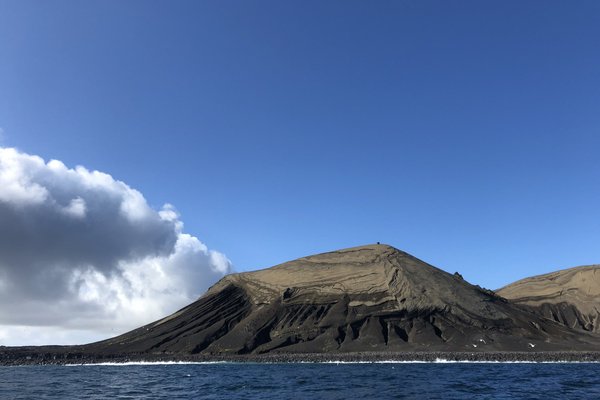Iceland
Surtsey
Surtsey is a recently born volcanic island, that provides a unique scientific record of the process of colonisation of land by plants, animals and marine organisms.
It was formed in a volcanic eruption in the sea which reached the surface on 14 November 1963. The eruption may have started a few days earlier and lasted until 5 June 1967. Since then it has been a protected natural area (free from any human interference) and a pristine natural laboratory.
Community Perspective: A visit – always limited to the surrounding waters as the island is a no-go zone - will be expensive due to the isolated location and lack of demand from the general public. It can be done as part of a longer cruise (as described by Solivagant) or with a privately chartered boat from Heimaey in the Westman Islands (as first discovered by Michael, an approach that has been proven successful several times after). A sightseeing flight sometimes also is a possible alternative. You will see a relatively low island with cinder cones, loosely-arranged lava rocks and some vegetation. In the surrounding waters, you may see seals or even a pod of orcas.
Site Info
Official Information
- Full Name
- Surtsey (ID: 1267)
- Country
- Iceland
- Status
-
Inscribed 2008
Site history
History of Surtsey
- 2008: Inscribed
- Inscribed
- Type
- Natural
- Criteria
- ix
Links
- UNESCO
- whc.unesco.org
- Official
-
- english.surtsey.is — Surtsey Research Society
- Related
-
- csmonitor.com — Iceland's new island is an exclusive club - for scientists only
All Links
UNESCO.org
- whc.unesco.org — whc.unesco.org/
Official Website
- english.surtsey.is — Surtsey Research Society
Related Resources
- csmonitor.com — Iceland's new island is an exclusive club - for scientists only
News Article
- Aug. 23, 2008 icelandreview.com — Marine Cable Installed in Surtsey Nature Reserve
Community Information
- Community Category
- Natural landscape: Volcanic
Travel Information
Not open to tourists
Recent Connections
-
Oceanic Dolphins
Orca, White-beaked and Atlantic White-s…
-
Perfect Inscriptions
2008 -
Full White Nights
Connections of Surtsey
- Geography
-
-
Mid-Atlantic Ridge
IUCN recommended a re-nomination as part of a geological Mid-Atlantic Ridge serial site (AB ev) -
Atlantic Ocean
-
Seamount
Former seamount -
Uninhabited islands
Never inhabited -
Type of volcanic eruptions
Surtseyan eruption: a type of volcanic eruption that takes place in shallow seas or lakes (wiki)See en.wikipedia.org
-
New islands
1963, formed in a volcanic eruption -
Full White Nights
-
Recently Active Volcanoes
The 1963 eruption began 130 m below sea level and reached the surface in November. Eruptions continued until June 1967 when it had formed an island with an area of 2.7 sq km. Erosion had reduced the island size to 1.4 sq km in 2007 -
Marine sites
-
- Ecology
-
-
Whales
Minke Whales and Orcas (due to the seal population) -
Seals
harbour seal, grey seal -
Oceanic Dolphins
Orca, White-beaked and Atlantic White-sided dolphins (UNEP-WCMC)
-
Strict Nature Reserve
Fully."The public is not allowed on Surtsey but there are overflights by helicopter, boat tours around the island, and cruise ships often pass nearby."
-
- Damaged
-
-
Islands threatened by inundation
"The island currently loses about 1.0 ha (2.5 acres) of its surface area each year......Estimates of how long Surtsey will survive are based on the rate of erosion seen up to the present day. Assuming that the current rate does not change, the island will be mostly at or below sea level by 2100. However, the rate of erosion is likely to slow as the tougher core of the island is exposed: an assessment assuming that the rate of erosion will slow exponentially suggests that the island will survive for many centuries" (Wiki)
-
- World Heritage Process
-
-
Inscribed on a single criterion only
ix. to be outstanding examples representing significant on-going ecological and biological processes in the evolution and development of terrestrial, fresh water, coastal and marine ecosystems and communities of plants and animals -
Perfect Inscriptions
2008
-
- Timeline
-
-
Holocene
14 November 1963
-
- Visiting conditions
-
-
Not open to tourists
Only open to scientists since its existence.
-
- Literature & Film
-
-
Tintin
The Shooting StarSee www.jp-petit.org
-
News
- icelandreview.com 08/23/2008
- Marine Cable Installed in Surtsey …
Recent Visitors
Visitors of Surtsey
- ALS
- A. Mehmet Haksever
- Ask Gudmundsen
- Bamse
- BaziFettehenne
- Christoph
- Clyde
- Cyberczar
- DonPolarBear
- Elia Vettorato
- Elliot
- Els Slots
- Feldhase
- Femke Roos
- Frederik Dawson
- George Gdanski
- Jana and Matt
- Jonas Kremer
- Jon Eshuijs
- KarenBMoore
- Karito Vies
- Kbecq
- Laurine
- Little Lauren Travels
- Lukasz Palczewski
- manuel011197
- Michael Ayers
- nan
- NoahFranc
- Philipp Peterer
- Randi Thomsen
- Roger Ourset
- Roman Bruehwiler
- Roman Raab
- Sabrina Liebehentschel
- scubarrie
- Solivagant
- Stanislaw Warwas
- Svein Elias
- Szucs Tamas
- Thomas Buechler
- triath
- Zoë Sheng
Community Reviews
Show full reviews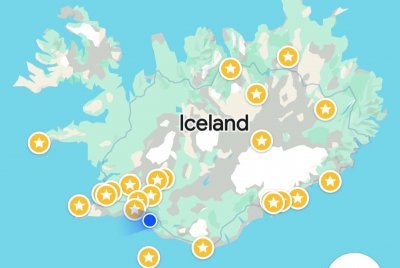
I made my 2nd trip to Iceland this past summer. In the year 2000 when I first made it to Iceland, there was no WHS in Iceland, but the tour of the Golden Circle I took from Reykjavik covered the future WHS of the Thingvellir National Park (inscribed in 2004). But this time I decided to go back for snorkeling at the Silfra Rift at the Thingvellir National Park and also to tick off the Vatnajökull National Park (inscribed in 2019) in addition to Surtsey (inscribed in 2008).
Upon my attempt to "visit" Surtsey, the first thing I had to do was to make sure that I can see it in the proper lighting condition, so after originally scheduling this trip in November last year, I decided to move it to June this year, the month with the longest daylight.
The second thing I had to do was, as I was trying to see Surtsey from an airplane, to make sure that I have a window seat and also not a seat over a wing, as a wing could wholly or partially obstruct my view of the island below.
The third thing I had to do was to make sure I bring my monocular with me in the plane.
On June 19, as the plane approached Surtsey, I was able to see exactly where the plane was on the Google Map, indicated by the little blue dot moving. I could see that we were on the …
Keep reading 0 comments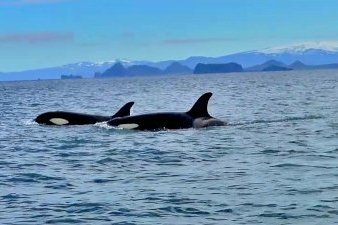
I visited this WHS in 2022 and special thanks go to Nan who not only took care of booking our zodiac-style trip around Surtsey but also managed to include 2 walk-ins to further decrease the overall costs of our truly unforgettable boat trip. This was certainly the highlight of my trip in Iceland and was the main drawing factor that convinced me to finally book my trip to Iceland's "summer", and it certainly didn't disappoint.
The boat trips organised by SACA require a leeway of at least a week if you want to absolutely be sure not to miss out due to bad weather or sea conditions. For that reason I had planned to drive along the ringroad from Reykjavik in an anticlockwise direction if things were to work out as planned (and luckily this was this case) or in a clockwise direction and leaving Surtsey for last. This meant that I only kept online bookings for accomodation with free cancellation at least 24-48 hrs before which is very hard in Iceland's peak season, even if you book well in advance and eventually I could not find any hotel room available for the night after the boat trip. The night before our boat trip I slept in a B&B close to the gravel road leading the turf church of Keldur. Very early in the morning I drove to the ferry departure point of Landeyjahofn were I parked my car for free and bought my return passenger tickets to Heimaey …
Keep reading 0 comments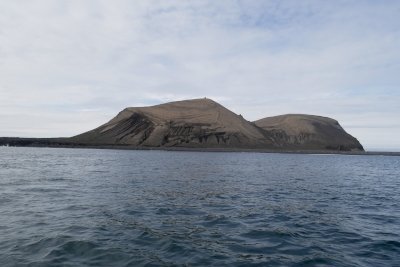
Boat trips are always ... a huge annoyance for a world heritage traveller. They are the most fickle of sites you can visit as they require preplanning up front, plenty of money and good weather on the day in question which you really can't control for.
Surtsey is no exception. Only the amount of money you need to bring (>1kEUR) feels prohibitively expensive for the individual traveller. So we partnered up. Philipp and I had been eyeing the trip for a while. Clyde decided to join, too, and so we ended up doing a mini meetup in summer 2022 on Iceland.
We boarded the boat to Surtsey in Heimaey. The boat then took us out to the Atlantic along the Vestmannaeyjar islands chain with plenty of stunning rock formations, caves and birds to see. None of the islands are inhabited, but most have a hunter's lodge on them plus a rope to climb up the really steep cliffs.
The furthest island in the chain is Surtsey. When the island comes into view you clearly see the difference to the other islands: it's made from volcanic ash, not from rocks. We went around once. In the process, we lucked out as a whole family of Orcas showed up in the core zone (which encompasses the surrounding waters).
I am not sure what the proper rating for the site is. The experience was stunning. And I understand the importance of the site. On the other hand, I also …
Keep reading 0 comments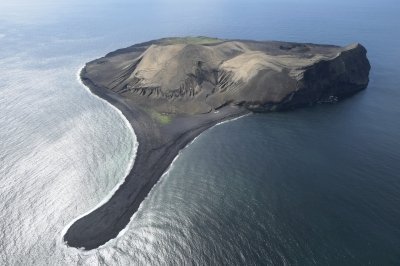
Surtsey is sometimes called the newest place on earth since it only rose up out of the sea in 1963.
As mentioned below, the island is off limits to tourists and only a handful of scientists are allowed to stay there, which makes it very hard to visit Surtsey. Nevertheless, we gave it a try starting with the tips provided in other reviews, i.e. we contacted SACA to sail to Surtsey in a small Rib boat.
The people at SACA were very helpful, answered all of our questions and even provided us with an overview of the route. However, the price was above our budget/what we wanted to spend so we asked SACA if there were other interested parties willing to share a boat and the cost. There was indeed a fellow WHS enthousiast wanting to go to Surtsey but unfortunately our travel dates did not match.
So we had another look online to see if other options were available and this lead us to air company Atlantsflug (www.flightseeing.is). The price offer we received was more or less the same as the one we received from SACA, so also over our budget.
With only three days left in Iceland and back on the south coast we contacted Atlantsflug again to check if we could share a flight in the coming days, but this was not the case. However, they provided us with the phone number of a private pilot (Gunnar, +354 8986124, gudnastadir@gmail.com) flying from Bakki …
Keep reading 0 comments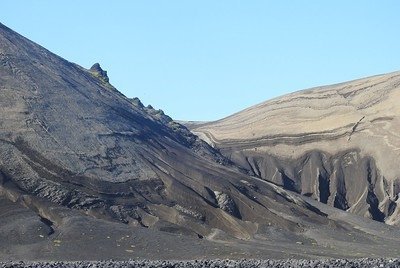
When you look at my ‘Missing’ map, you can see that I have visited nearly all European WHS except for those tiny islands scattered here and there at the fringes. Last year was a true debacle in that regard, missing out on both St. Kilda and Skellig Michael in the same summer due to unfavourable weather conditions. The same risk applies to Surtsey, though it lies not so far out as St. Kilda. Also, unlike the other two, Surtsey is not served by scheduled boat tours and the once-available flightseeing tours have been discontinued. So I did not dare to hope to reach it during my trip around Iceland.
Fortunately, those intrepid Norwegians Randi and Svein visited 2 weeks before me and proved that it would be possible. Just cross your fingers for calm weather and bring a stash of money (in Iceland this means: having a credit card with a high enough limit). The go-to guys for a private charter are SACA. When I saw that the weather forecast for the weekend was sunny and calm, I contacted them by email on Wednesday. On Friday evening, when the detailed weather maps for the next day were available, the final decision was made to leave the next morning at 9 a.m.
So we went, captain Simmi, his adult son and myself on a so-called RIB, something that looks like an inflatable dinghy - but with a sturdy hull and the qualification "unsinkable". It is completely uncovered and has …
Keep reading 0 comments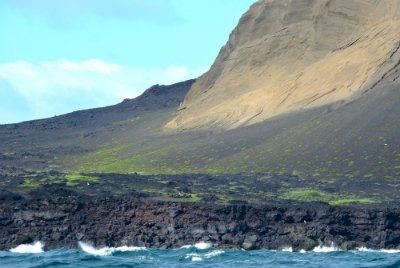
Visit in July 2019.
Surtsey is a place that I have been fascinated with for essentially my entire life. In fact, the island and I are almost exactly the same age. Technically, Surtsey was “born” about eight weeks before I was, but I also existed at the time Surtsey rose from the sea, I just hadn't “erupted” quite yet. I also remember watching movies about the creation of the island, and also of the eruption ten years later on the nearby island of Heimaey, in the Vestmannaeyjar, when I was in the fifth grade in primary school. Consequently, I was very motivated to make an actual visit to this difficult-to-reach WHS.
Nothing has really changed in recent years regarding the status of Surtsey. It is still prohibited to land on the island, and it is unlikely that this will ever change. That leaves a trip to its offshore areas by sea, or a flyover in a small aircraft, as the only realistic options for a visit. In my opinion, this is not really a bad thing, since I don't believe that actually walking on the island would provide any real value compared to what you could see by the other methods. Additionally, there is not a safe landing site for small boats anywhere on the island at this time.
As I neared the area, there was still one tour operator in the Vestemannaeyjar that advertises a Private Tour to Surtsey on their Web site. However, when I …
Keep reading 0 comments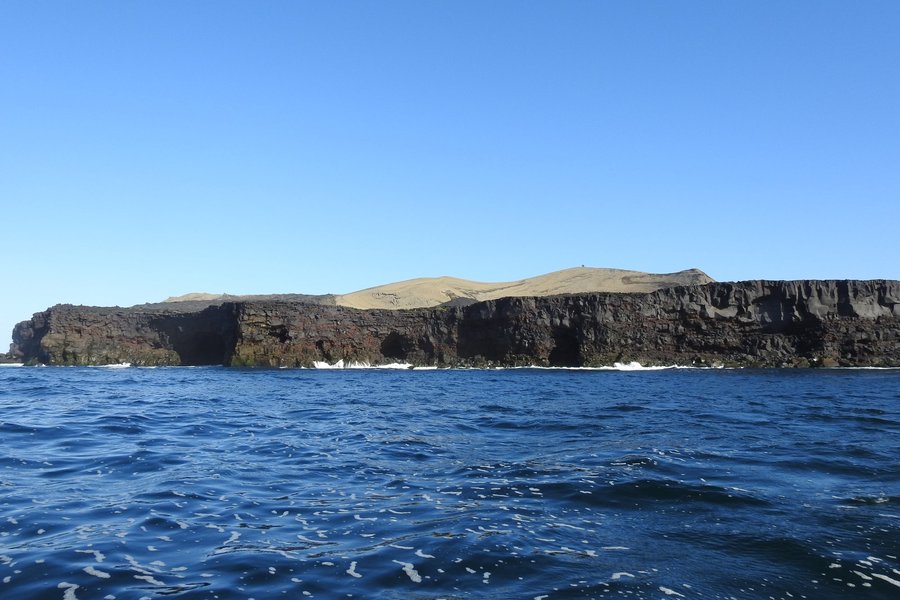
I was actually there when the eruption started. It was about 5am when a very large underwater noise was heard. I was on HMS Duncan at the time and we immediately went to 'Emergency Stations' as no one knew what was happening. We were all on the upper deck and as dawn broke we saw smoke coming from the surface of the sea. We closed the scene and realised that this was a volcanic eruption under the sea taking place. We and the ship were covered in ash. Amazing experience!!!
Keep reading 0 comments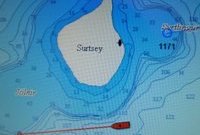
As indicated in the previous review, a “tourist” visit to Surtsey involving a landing is not possible - and even such visits by scientists are strictly limited. We did however achieve a very close viewing from the sea (around half a mile) during a recent voyage from UK to Greenland. Indeed I even feel entirely “vindicated” in claiming a visit to the inscribed area since this includes a significant marine element as well as the island itself. A comparison of my photo of the display screen of our vessel’s navigation system with the map of the inscribed area from the UNESCO site shows clearly our passage within the inscribed boundaries and indeed later included a passage “over” the corner of the now submerged island of Jolnir to the SW of Surtsey. This island, named after another Norse God, emerged with Surtsey in 1963 but rapidly eroded after volcanic activity ceased in 1966.
So what did we see/learn from our “sail by”? Well such a rapid visit to Surtsey made solely for that purpose would certainly be hard to justify in cost terms! But we had been visiting the Westmann Islands and Surtsey was on a natural course from them across the Denmark Strait to Greenland. This visit mainly involved the island/town of Heimaey and encompassed such interests as bird life, Norse history, the Westmann “way of life” and of course the famous eruption of 1973 which led to the evacuation of the entire island, the partial destruction of the town …
Keep reading 0 comments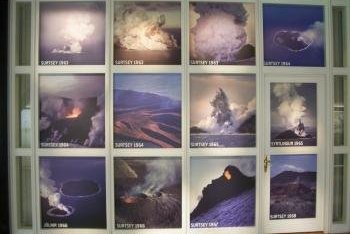
The island of Surtsey was created by a huge volcanic eruption that lasted from 1963-67. Ever since it broke through the sea its entire life has been rigorously documented and studied, probably the only place on earth that this can be said of. The study has not only revealed how the geology of the island has formed but also how different forms of life have started to inhabit it. It certainly deserves it’s place on the World Heritage List.
It is one to add to the list of almost impossible places to visit. Due to the nature of the sight only a very select number of Scientists are allowed onto the island in order to study how life colonises this latest addition to Iceland.
It is possible in summer to have a ‘cruise’ around the island, or there are planes that fly from Reykjavik to give an overview but these are pretty expensive (Iceland isn’t a cheap destination) and perhaps only really rewarding for the specialist/ completionist.
The best bet is to head for Reykjavik’s excellent Culture House, the top floor of this small museum is dedicated to Surtsey (the ground floor has an astounding display of early Icelandic manuscripts, including many of the oldest known versions of the Saga’s) specifically to tie in with the nomination as a world heritage site. It is a great exhibition there is an interactive display that illustrates how the island has changed throughout its life, from size and shape to how it has …
Keep reading 0 comments
